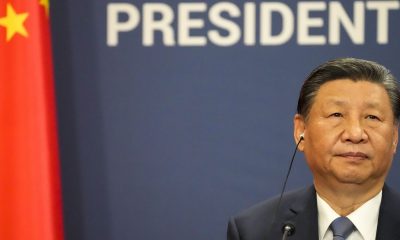General News
Amid raw materials rush, few are considering a more circular approach

By Tahmid Chowdhury, Taskforce for Climate Neutral and Circular Materials, CLG Europe
Without substantial action now, we are destined to continue our take-make-use-waste cycle, Tahmid Chowdhury writes.
Our lives are built around raw materials. From lithium to cobalt to aluminium, these minerals and metals are the building blocks of city infrastructures. They quite literally make up the smartphones and laptops we use every day.
But crucially, raw materials are a key ingredient in dealing with the climate crisis.
Many are essential for the renewable energy transition, whether that’s building solar panels and wind turbines or creating lithium-ion batteries for electric cars.
Lithium demand, in particular, is expected to be 12 times higher in the EU by 2030 and, globally, 90 times higher by 2050.
Some 24 materials listed in the EU’s Critical Raw Materials Act (CRMA) released in March are imported from China. In many cases, China is the majority or sole supplier.
For example, China provides 100% of the EU’s supply of heavy rare earth elements. Add to that the unstable geopolitical landscape in Russia and Ukraine and the ongoing aftermath of the Covid-19 pandemic — and EU supplies could be at risk.
So how do we guarantee greater security?
We should be careful with our overreliance on mining
Increasing our domestic stock within Europe is one option.
One of Europe’s first large-scale lithium mines has just been given the green light in Portugal.
Meanwhile, Norway is looking to open an area of ocean nearly the size of Germany to deep-sea mining in order to extract battery metals from its sea floor.
The EU’s target is to reach 10% of annual consumption from domestic extraction.
But mining comes at an environmental cost. The process consumes significant amounts of energy and water, mines can pollute the surrounding air and water with chemicals and disrupt wildlife habitats.
So while resistance to mining in Europe is understandable, what we risk is simply shifting these problems to other parts of the world.
In the Democratic Republic of Congo, large-scale cobalt mining has led to toxic air, the devastation of livelihoods due to destroyed crops and workers being forced to mine in ‘subhuman degrading conditions’.
In Chile’s Atacama salt flats, lithium mining contaminates and diverts scarce water resources away from local communities, provoking local conflicts.
Despite the problems created by more extraction, no one is seemingly talking about a more circular approach to raw materials.
Circularity is not just recycling
What is circularity? It is the concept of using, re-using, and designing products for recyclability and repairability to reduce our material consumption and our carbon emissions.
If we kept a more substantial amount in the economic system, we wouldn’t need to import or mine as many materials.
The CRMA introduces a recycling target of 15% in Europe, which, if adopted, could be a positive step.
However, circularity is far more than just recycling — it is looking at how to keep the value of materials in the system more effectively and for a longer duration.
No doubt, a circular economy would require new infrastructure for collecting systems and advanced recycling technologies to both use materials more efficiently and extend the lifecycle of products.
But this is entirely possible. It is what the EU’s CRMA did not sufficiently address in March of this year.
A much-needed shift in thinking
A flagship report coming out on 17 July by CLG Europe’s Materials Taskforce addresses how European businesses are tackling this issue head-on and how policymakers can further empower this shift.
From materials technology company Umicore which has developed battery recycling technology with a capacity of 7,000 tonnes per year, to aluminium packaging giant Ball’s target to achieve 90% recycling and an 85% recycled content target by 2030.
New recycling technologies need to be developed in the EU, and recycling capacities must be built up before large quantities of end-of-life materials occur.
Promoting the use of recycled materials will require transparency and knowledge-sharing across the board.
Without substantial action now, we are destined to continue our take-make-use-waste cycle.
This will only happen if policymakers, citizens and businesses come together with a bold vision for a green and circular European economy.
Tahmid Chowdhury runs the Taskforce for Climate Neutral and Circular Materials at Corporate Leaders Group (CLG) Europe, part of the Cambridge Institute for Sustainability Leadership (CISL).
At Euronews, we believe all views matter. Contact us at view@euronews.com to send pitches or submissions and be part of the conversation.
Disclaimer: No copyright infringement intended. All rights and credits reserved to respective owner(s).
























